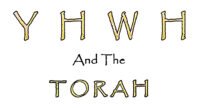INTRODUCTION
The Book of Yashar has traditionally been misunderstood as a name of an individual, (Jasher) but in Hebrew Sĕfer ha’Yashar is translated as ‘Book of the Upright’, or ‘the Upright Record’. There is some controversy regarding whether the Book of Yashar should be included amongst canonical Scripture despite twice being mentioned in the Scriptures. Both the Book of Yahoshua (Joshua) and Shemu’ĕl (Samuel) make reference to the Book of Yashar:
“So the sun stood still, and the moon stopped, till the nation avenged itself upon their enemies. Is this not written in the Book of Yashar?” Yahoshua 10:13 This is a reference to Yashar 88:63-65
“Then Dawiḏ lamented with this lamentation over Sha’ul and over Yahonathan his son, and he ordered “The Bow” to be taught to the children of Yahuḏah. See, it is written in the Book of Yashar.” 2 Shemu’ĕl 1:17-18
This is a reference to Yashar 56:8-9
The question is whether this is in fact the same Book of Yashar mentioned in Scripture. Although there are several portions that hint at some embellishment, the chronologies and narratives confirm and even elaborate on historical events recorded in Scripture. It is highly unlikely that this Book is a counterfeit as the writer includes so many extra details surrounding Scriptural events that agree with other ancient sources, and the more details that are added, the more likely it is to find some error should there be one.
Josephus described the Book of Yashar in this way:
“By this book are to be understood certain records kept in some safe place on purpose, giving an account of what happened among the Hebrews from year to year, and called Yashar or the upright, on account of the fidelity of the annals.”
We leave you, the reader to answer the question of legitimacy for yourself, but are sure you will find the reading quite enlightening. The text for this book is from the translation from Hebrew in 1613 with the Name of YHWH restored in paleo Hebrew along with the majority of names transliterated from Hebrew sources to give an accurate pronunciation. As with YAH Scriptures, all pagan influenced words pertaining to 𐤉𐤄𐤅𐤄 have been avoided and the Hebrew words used have been included in the GLOSSARY.
PRONUNCIATION GUIDE
a – äh in ärm ḇ – bh v as in vet
e – eh as in elm ḏ – dh th as in them
i – ee as in ēel ĕ- ey as in eight
o – oh as in on ḡ – gh The ‘ḡ’ is pronounced as
u – oo as in üno a soft aspirated g sound.
ḥ – (ch) The ‘ḥ’ and ‘ḵ’ are pronounced as
ḵ – (kh) the ‘ch’ in the German composer
Bach, or the Scottish Loch, like a
guttural, aspirated h sound.
